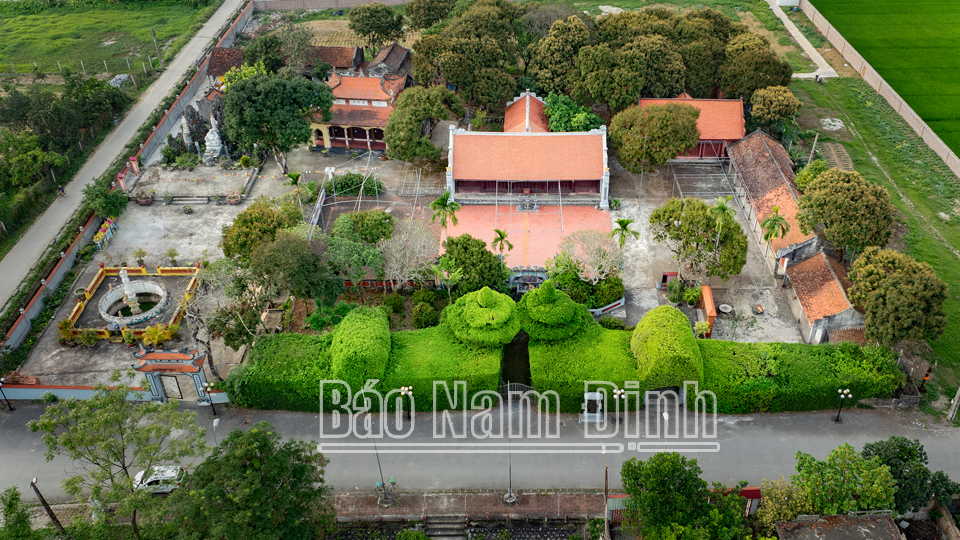 |
| National historical and cultural relic Dinh Ruoi, Trung Nghia commune. |
Dense system of relics
Each relic in Trung Nghia commune is associated with unique historical and cultural stories, becoming the pride of each community. Ruoi communal house (Ngoc Chue village) worships Kien Quoc phu nhan Luong Thi Minh Nguyet, a heroine of the early Le dynasty who set up a shop next to Co Long citadel to collect information about the Ming army, secretly helping the Lam Son insurgents defeat this important citadel. After the victory, she and her husband, Mr. Dinh Cong Tuan, refused to be granted a title, only asking for land to help the people. Admiring her virtue and contributions, the people built a temple to worship her. In 1902, the relic was restored to Kien Quoc communal house, because it is surrounded by ancient ruoi trees, so people often call it Ruoi communal house. In 1992, the communal house was recognized as a National Relic. Every year, the traditional festival is held in the 11th lunar month with many unique rituals, both commemorating ancestors andeducating the tradition of patriotism.
Thong communal house is a place to worship Thien Da Dai Vuong, a god of the Hung Kings who helped people control water, ward off evil spirits, reclaim land, and develop production in the Tieu Bang area. He is revered as the village's tutelary god, the spiritual support of the people. The communal house has traditional architecture typical of the Northern Delta region with elaborately carved horizontal lacquered boards, parallel sentences, and rafters. Not only a place of worship, Thong communal house is also a community cultural center, used to be a place for revolutionary meetings and anti-tax struggles before 1945.
A special highlight in the Trung Nghia relic system is the communal house - pagoda - palace complex of Nhuong village. Nhuong communal house worships Quy Minh Dai Vuong, the younger brother of Tan Vien god, the god of the South; Hung Long pagoda is a place for Buddhist activities of the community; Thanh Mau palace worships Thuy Tinh Ma Vang princess, reflecting the Mother worship belief of the Vietnamese people. The three structures are located in a contiguous space, forming a unique cultural - spiritual complex, demonstrating the harmony between religion and indigenous beliefs.
In addition, the Le family temple in Van Minh village is a typical relic of a large family in the region. Built during the Later Le Dynasty, the building currently preserves many royal decrees, horizontal lacquered boards, and ancient parallel sentences. This is a place to hold ceremonies, family meetings, promote learning, preserve the morality of "remembering the source of water when drinking" and contribute to connecting the local community.
Promoting the value of relics after merger
Comrade Phan Viet Thang, Chairman of Trung Nghia Commune People's Committee, said: After merging administrative units, the government and people of Trung Nghia Commune have paid special attention to the work of preserving the relic system in the area. Right from the early days of establishing the new commune, the Commune People's Committee has reviewed and completed the relic management boards at each location, and at the same time strengthened the festival committees at communal houses and pagodas to look after the worship facilities and organize ceremonies. Each relic has a management board consisting of prestigious elders and representatives of the village government, the Elderly Association, and organizations... Through that, the self-management role of the community in protecting heritage is promoted, under the guidance and support of the government. Trung Nghia Commune currently has many male and female worship teams actively operating at communal houses and temples. The worship teams gather people who are knowledgeable about traditional rituals.
Not only stopping at preserving, the commune also actively promotes the value of relics through many practical and creative activities. Schools in the area have organized extracurricular lessons for students at historical relics. They heard stories about female general Luong Thi Minh Nguyet when visiting Ruoi communal house, saw with their own eyes the ancient horizontal lacquered boards and parallel sentences at Thong communal house, or learned about the Mother Goddess worship ritual in Nhuong palace. Through each field trip, students love their hometown's history more and form a sense of respect for heritage. The movement of the whole people joining hands to protect relics has also spread throughout the villages. Every month, the Women's Union, Farmers' Union, Veterans' Union, etc. mobilize members to participate in the general cleaning of the communal house and pagoda grounds. Every tree in the communal house yard, every mossy wall is swept and kept clean by the people. Security cameras have been installed at relic sites to prevent theft of antiquities and to monitor and remind visitors to practice a civilized lifestyle when visiting. In addition to focusing on preserving the solemn rituals, the festivals are also rich with folk games and mass performances recreating local history, attracting a large number of people to participate. Through this, cultural heritage is "lived" in contemporary life, becoming a spiritual resource to unite the community and effectively educate about traditions.
Infrastructure upgrade - resources for heritage
Identifying cultural heritage as a valuable asset, on the basis of inheritance from localities, Trung Nghia commune has mobilized many resources to restore relics as well as develop infrastructure to serve conservation work. Many large-scale restoration and embellishment projects have been carried out with the joint efforts of the State and the people. Typically, at the communal house - pagoda - Nhuong palace complex, from 2015 to present, major restorations have been carried out: restoration of the front hall and the back palace, restoration of the front hall of the pagoda, reinforcement of the foundation of the Holy Mother Palace... with a total cost of more than 3 billion VND. The completed project is spacious but still retains the original elements, meeting the people's wishes. Since 2019, Ruoi communal house has also invested in repairing the tiled roof, repainting and gilding the horizontal lacquered boards and parallel sentences, with funds mobilized from contributions from the children of the homeland and the support budget. Thanks to that, degraded relics have gradually been restored more sustainably, prolonging their lifespan. Along with the restoration, the improvement of traffic infrastructure to the relic sites has created favorable conditions for connecting the heritage. Since 2022, the 2km long road leading to Ruoi communal house has been paved, making it convenient for people and tourists to make pilgrimages. The road leading to Nhuong communal house, about 300m long, has also been concreted since 2017, wider than the previous narrow path, allowing cars to go all the way. A system of signs and explanations about the relics has been installed on the main roads, both providing directions and briefly introducing visitors to the value of the heritage. Together with the State, local people have voluntarily donated land and contributed to open roads and improve the landscape around the relic. The consensus from the Party's will and the people's hearts shows that cultural heritage has truly become a common driving force, connecting the government and people of Trung Nghia commune in the goal of building a rich and beautiful homeland.
Merging three communes, Trung Nghia has become a convergence point of many heritages. In the modern flow, preserving and promoting the value of relics is not only the task of the government but also requires the active participation of the people. Each communal house, pagoda, and family church is a vestige of the past, thereby contributing to nurturing the national cultural identity, laying the foundation for sustainable development today and tomorrow.
Article and photos: Viet Du
Source: https://baonamdinh.vn/van-hoa-nghe-thuat/202504/xa-trung-nghia-voi-cong-tac-bao-ton-di-tich-d1b7f84/








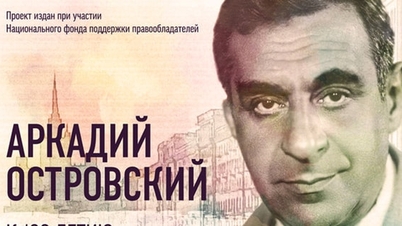



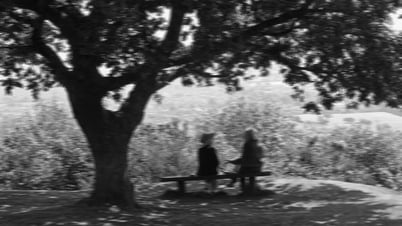

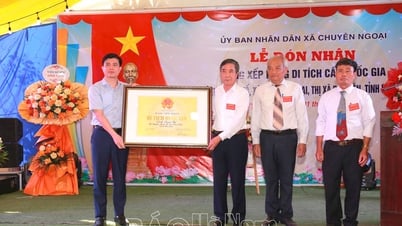



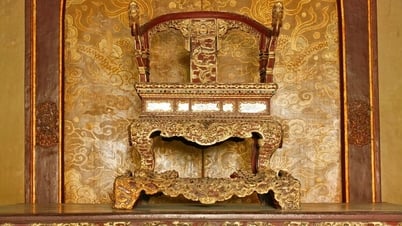





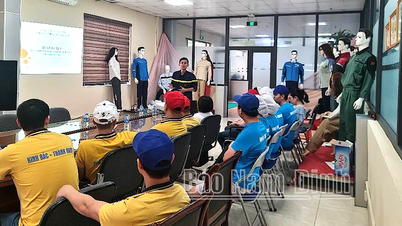
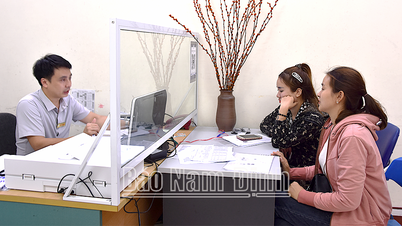
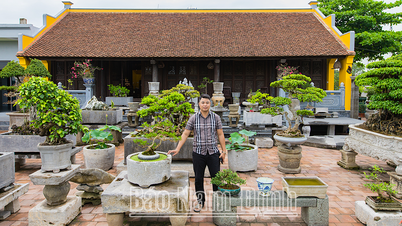
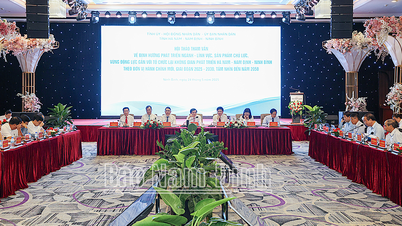
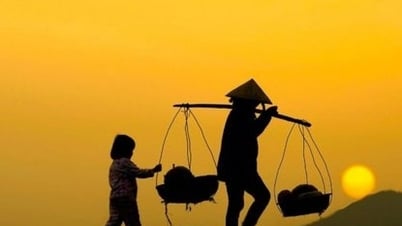
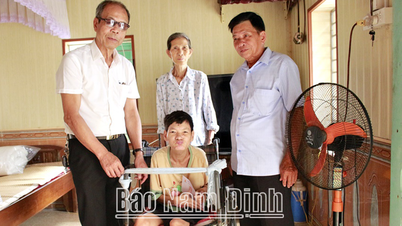
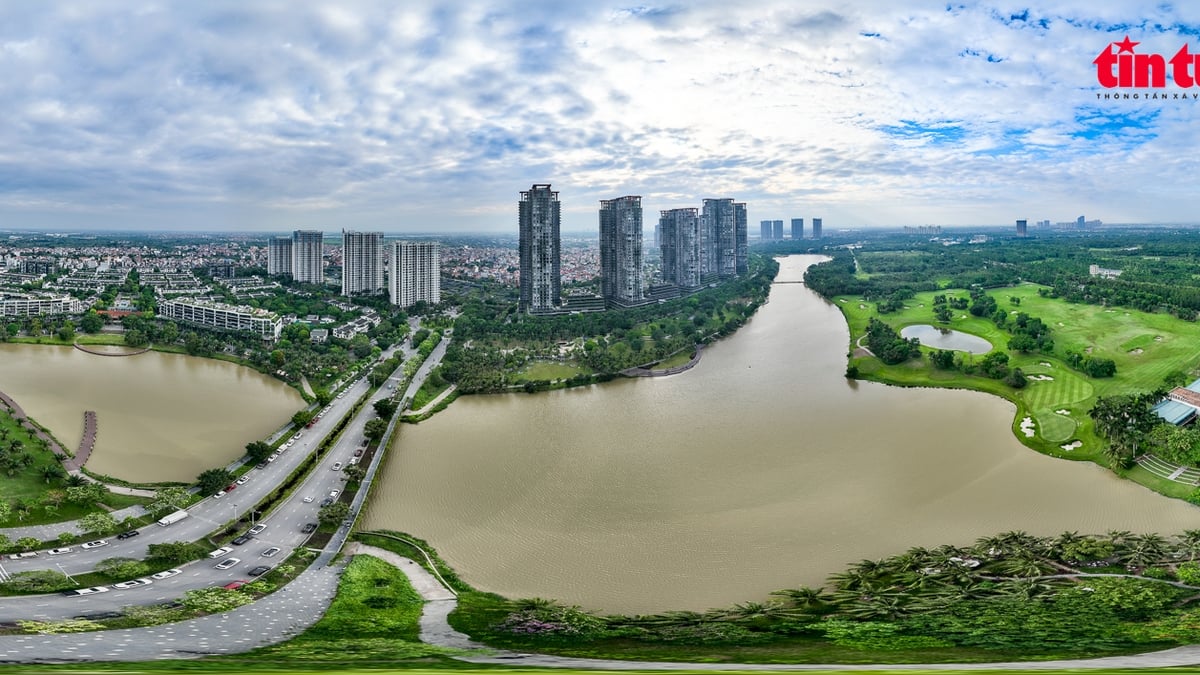

































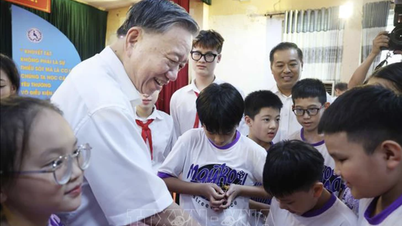
















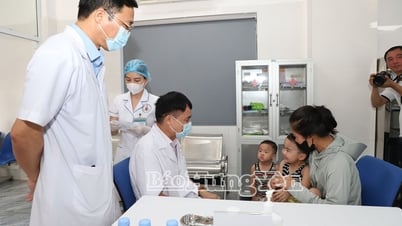





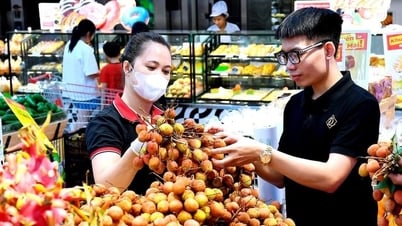



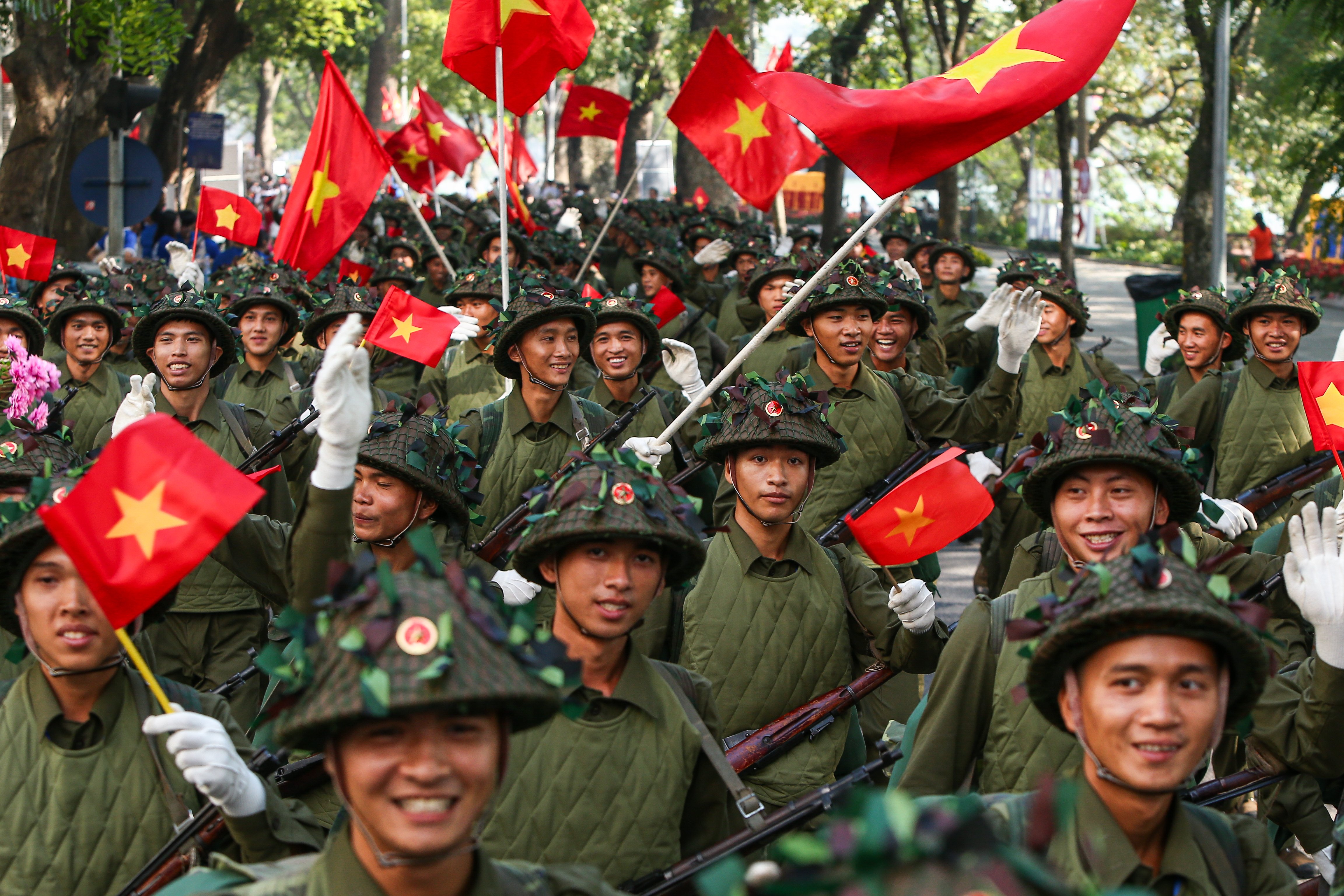



Comment (0)